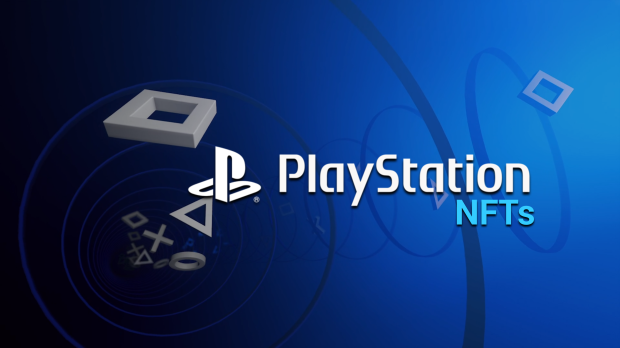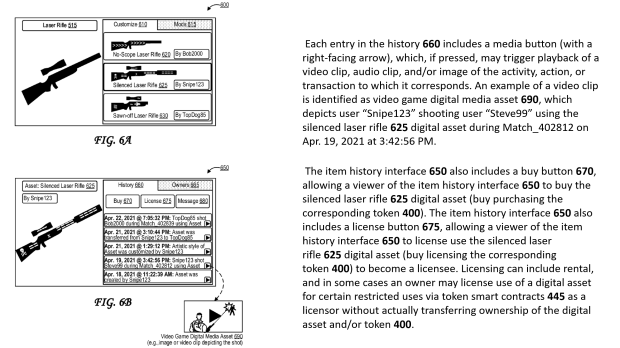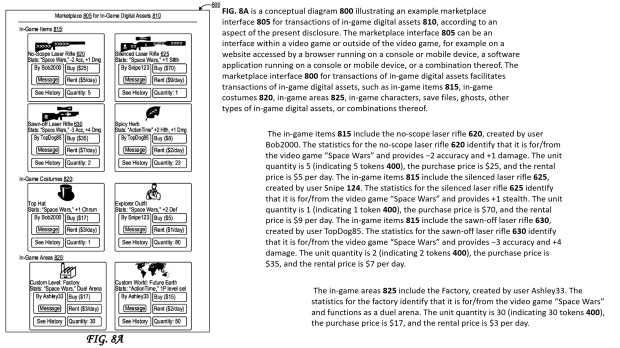Sony NFT patent describes the marketplace where users buy, sell and rent digital assets

Sony has just published a very interesting patent that will use blockchain to keep track of in-game items such as cosmetics and user-generated content, which includes screenshots, video, and even user-created items. This system could theoretically be linked to a token economy where users buy and sell digital content.

SEE GALLERY – 4 PICTURES
Note: The existence of this patent does not mean that the features described herein will be available in any finished products or services.
Sony’s latest patent, US20220358450 – TRACKING OF UNIQUE IN-GAME DIGITAL ASSETS USING TOKENS ON A DISTRIBUTED LEDBOOK, has some far-reaching implications for the future of the PlayStation brand. The core idea is quite simple: Sony is patenting a way to use blockchain to keep track of digital content to authenticate and assess value so that the digital assets can be sold on a marketplace. Assets include cosmetics, in-game items, custom weapons and armor, game save files and loadouts, and even social content created by PlayStation users such as screenshots and video. We must emphasize that much of this is theoretical and there is a good chance that most of the functions described in the patent will not be used.
Like all patents, this particular one is extremely technical and goes over many different scenarios. It is a library of drawings, figures and descriptions for specific functions. I will do my best to cover the more interesting topics.
Okay, so let’s start from square one. Why is Sony thinking of doing this?
Sony wants to make in-game items unique, presumably because unique items are more valuable and can potentially cost more money. You know those Fortnite cosmetics you just had to buy to avoid FOMO? What if the cosmetic product was unique to you or at least limited enough to not be widespread… basically as an NFT.
Background:As a result, in traditional video games, there is no way to know, track, or authenticate a story for a particular instance of an item in the game.
The patent refers directly to collectibles from celebrities or influencers. This reinforces the NFT focus. We’ve seen many popular sports icons release NFTs, for example, and the same could happen with major streamers or even video game publishers who could “mint” assets.
But unlike a traditional NFT which is practically an image, these digital assets can actually be usable in a game. Use cases include items, weapons, cosmetics, and actual game save files. Does it sound familiar? Sony had previously patented something that would effectively let users “jump” into another player’s save game.
Technical field: The current technology concerns the tracking of digital assets. More specifically, the present technology may provide various techniques for tracking the creation, use, modification, and/or transfer of digital assets created in a video game and/or created based on the playing of a video game.

Why does Sony need to track in-game assets? In this way, the assets themselves can be authenticated and verified for both security and potential valuation. Why does an item need to be evaluated? The patent specifically mentions a marketplace where players can exchange digital assets.
Okay, let’s get to the real root of this patent. From my understanding, the biggest reason Sony wants to do this is to create a bustling economy where players can buy, sell and even rent digital assets.
So why buy something that someone made? There are a few reasons. The patent outlines various customizations that users can add to elements of the game, and we know that many games have randomized mods for specific weapons. Imagine being able to buy the perfect Fallout 76 weapon, for example.
These can presumably be earned in-game (imagine being able to sell a Final Fantasy legendary weapon to someone else who doesn’t want to spend the hours unlocking it, for example) that are also customized by the player.
Specific metadata properties can also give an item more value. The proposed user interface will display item-specific data such as what players were killed by, for example, a laser gun. An item that had killed a popular streamer could potentially have more value than another.
It goes deeper. The user interface will have an interactive media playback option that shows a video of how the item was used; for example how the laser gun was used to kill a streamer such as Ninja.

What is also notable is that players will be able to license, or rent out, the digital asset they own. Someone can pay you $5 per day to access an item you own. Need a more powerful weapon to use against a boss? Rent a legendary sword for a day instead of buying it for $15.
Assets aren’t just limited to in-game items either. They include save files, in-game characters/loads, and user-created content such as in-game worlds or areas.
Imagine you maxed out your character building and were able to sell it to someone else online. Or that you’ve created an awesome Elder Scrolls mod that adds a new landmass to the game. You can sell the mod directly to other people as a digital asset or even license it out as a rental.
One thing that probably won’t take off is the sale of digital assets such as media. The patent notes that videos and screenshots can also be converted into blockchain assets and therefore sold (or rented) on the marketplace. I don’t see anyone paying money for an in-game clip that someone made.
The rest of the patent is a fairly technical discussion of how the ledger and blockchain system works, with direct mention of digital asset creation and certification engines.
Remember that this is only a patent and does not indicate any kind of finished product.
























